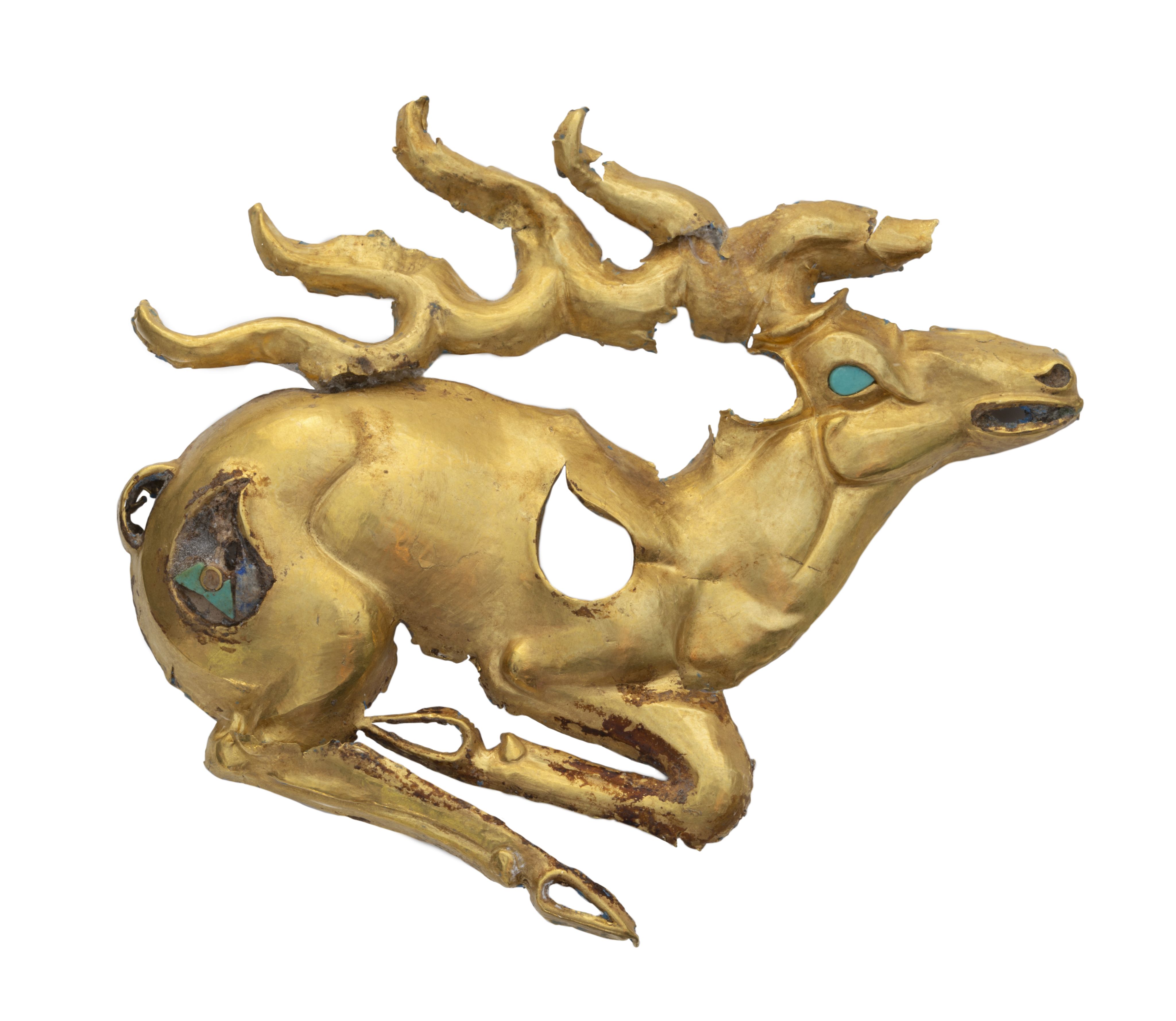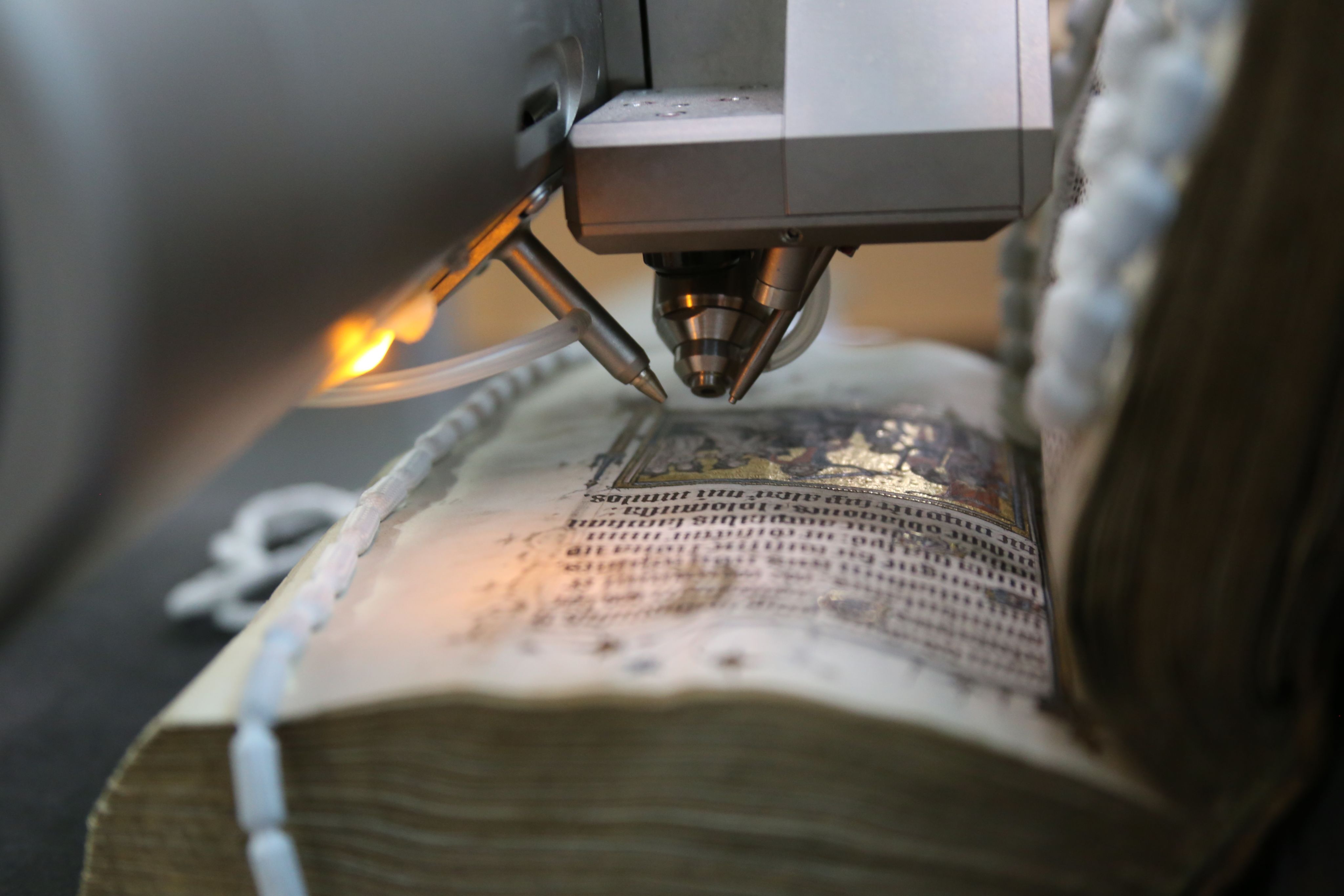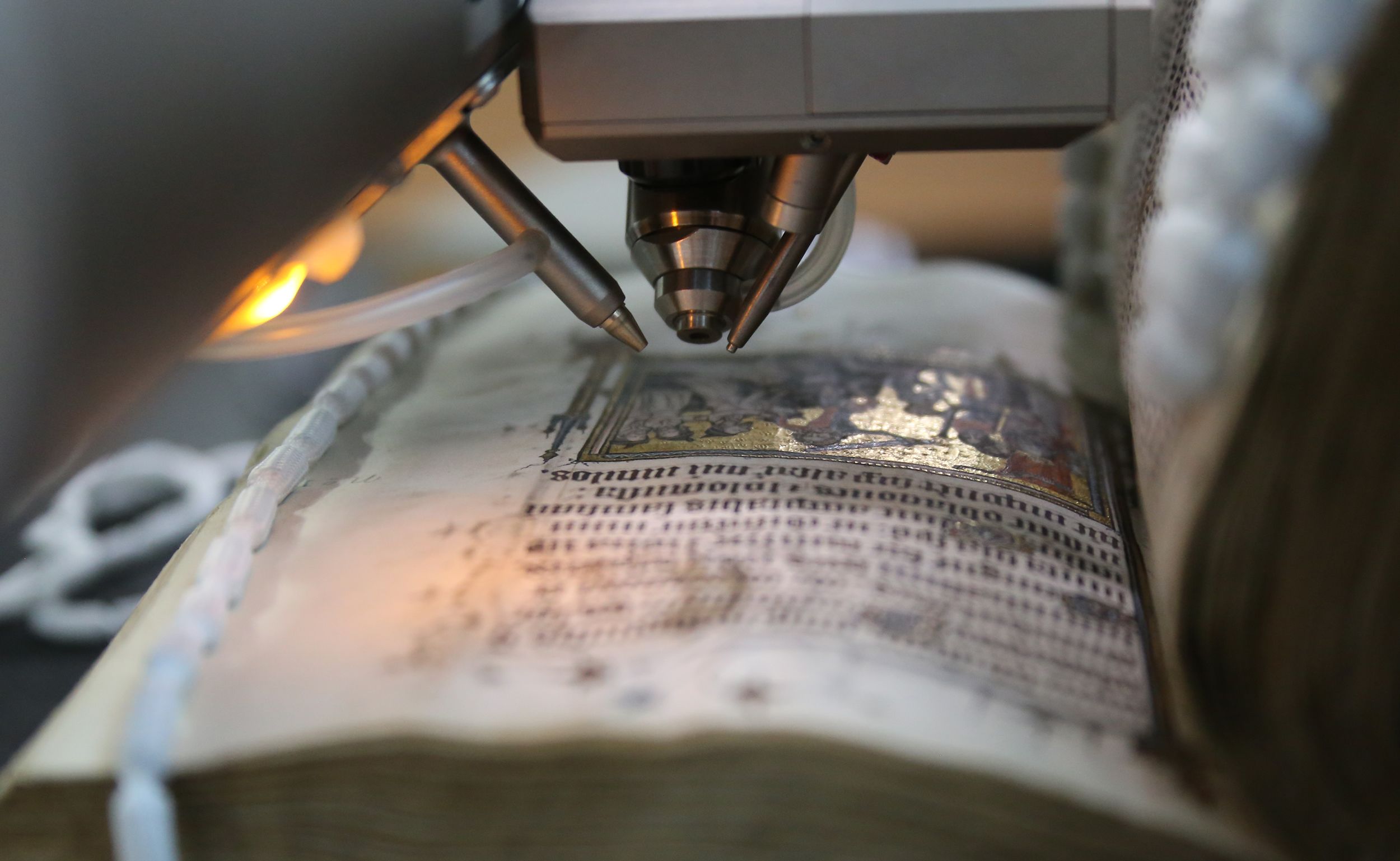Revealing the hidden histories of ancient artefacts
Infrastructure that applies scientific approaches to studying heritage is enhancing understanding of ancient artefacts – and bringing them to life for diverse audiences.
In 2018, the undisturbed burial ground of an Iron Age Saka youth, furnished with astounding gold grave goods, was discovered in East Kazakhstan. Thanks to the Cambridge Heritage Science Hub (CHERISH) infrastructure, the hidden histories of these unique artefacts are being revealed to both researchers and the public.

Golden stag with inlays of turquoise and lapis lazuli. Eleke Sazy, 8th–6th century BCE. An artefact from the Gold of the Great Steppe exhibition which held 2,700-year-old gold artefacts from the ancient Saka burial mounds of East Kazakhstan Credit: The Cambridge Heritage Science Hub (CHERISH)
Golden stag with inlays of turquoise and lapis lazuli. Eleke Sazy, 8th–6th century BCE. An artefact from the Gold of the Great Steppe exhibition which held 2,700-year-old gold artefacts from the ancient Saka burial mounds of East Kazakhstan Credit: The Cambridge Heritage Science Hub (CHERISH)
Cambridge is home to world-leading researchers across Technical Art History, Heritage Science and Archaeological Science, based at the Fitzwilliam Museum, the Hamilton Kerr Institute, the Department of Archaeology/McDonald Institute for Archaeological Research, and Cambridge University Library. CHERISH pools the capabilities and state-of-the-art resources of these institutions – including a multi-spectral imaging system for large books, maps and manuscripts and microCT scanner for producing 3D images of the internal structures of objects – creating a network of expertise spanning humanities and sciences.
Using specialist equipment from CHERISH, University of Cambridge researchers were able to carry out scientific analyses of the manufacture and composition of the hundreds of gold objects from the burial ground. In a first, they were able to do so while the artefacts featured in a blockbuster exhibition at the Fitzwilliam Museum, Gold of the Great Steppe.
“The close-knit network of specialists and infrastructure at CHERISH made it possible to run artefact analyses and a large-scale public exhibition in parallel,” says Dr Paola Ricciardi, Senior Research Scientist at the Fitzwilliam Museum and co-lead of CHERISH.
PhD student Saltanat Amir used X-ray fluorescence spectroscopy, 3D microscopy, scanning electron microscopy and computer tomography to analyse the archaeological objects, seeking to understand more about the materials and the craftspeople who created them around 2,500 years ago; the scientific results were communicated in real time through public engagement channels.

An XRF spectrometer examines an illuminated manuscript. Credit: The Fitzwilliam Museum, University of Cambridge
An XRF spectrometer examines an illuminated manuscript. Credit: The Fitzwilliam Museum, University of Cambridge
“The CHERISH network enabled us to share not only the discoveries but also the journey of the research process, its joys and its uncertainties, getting immediate feedback from both our colleagues in Kazakhstan and the wider public in Cambridge,” says Marcos Martinón-Torres, Pitt-Rivers Professor of Archaeological Science and co-lead of CHERISH.
Image: An XRF spectrometer examines an illuminated manuscript. Credit: The Fitzwilliam Museum, University of Cambridge
